Killers are coming for the Su-57 or Who is on us with the fifth?
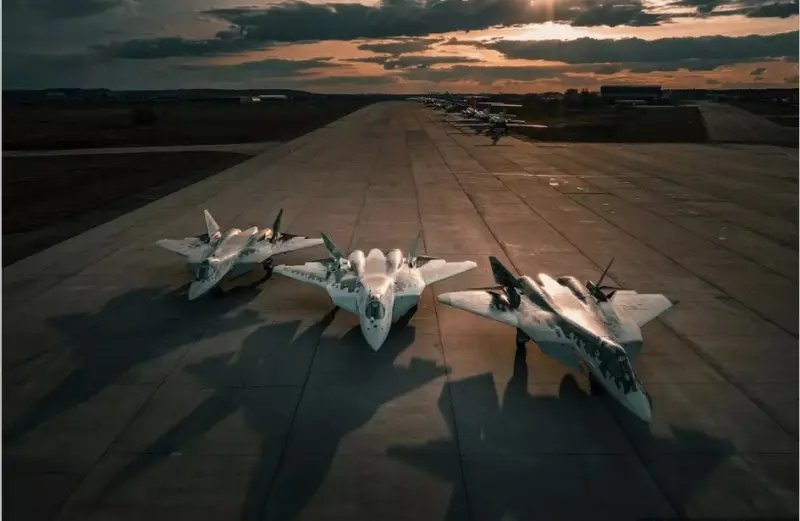
The fifth generation show continues around the world. Countries are rapidly joining the race, which at any cost want to acquire their own “five” fighter. Probably, soon it will not even be a question of defense capability, but a question of prestige.
Yes, it’s a matter of prestige, like an aircraft carrier. The country has such a trough, even if it’s not really good for anything - that’s one deal, no - that’s where you go, into the backyard.
And in general, no one is even interested in the fact that, in fact, only American aircraft carriers are combat-ready in the world. Conditionally combat-ready - Indian and Chinese. The rest, who are still struggling to get away from the docks and repair plants - alas, no offense, cannot be considered warships. But there is a tick, the aircraft carrier club includes Russia, Great Britain, Italy, France and Thailand. Although the question here is why Thailand, a completely peace-loving country, needs this.

The situation is approximately the same with airplanes, but an airplane is much simpler to implement than an aircraft carrier. Therefore, you can be proud of airplanes, you can fight, or you can, excuse me, trivially make money on the global arms market, because an airplane is an airplane in Africa. That is, the list of potential buyers is much wider than for a ship.
If countries such as Uganda (99th country in the world in terms of GDP and 179th in terms of GDP per capita) purchase modern aircraft such as the Su-30MK2, then what can we say about those who are much higher on the evolutionary ladder ? And to whom he himself aviation God ordered the building of airplanes?
So at the end of the day, many today are trying to portray something like the fifth generation. We, Swedes, Germans, French, Koreans, Chinese, Turks... Forgive me, but a great aviation power with great historical Türkiye's aviation past is also in the picture.
And here one question arises: what should this “fifth generation fighter” be like?
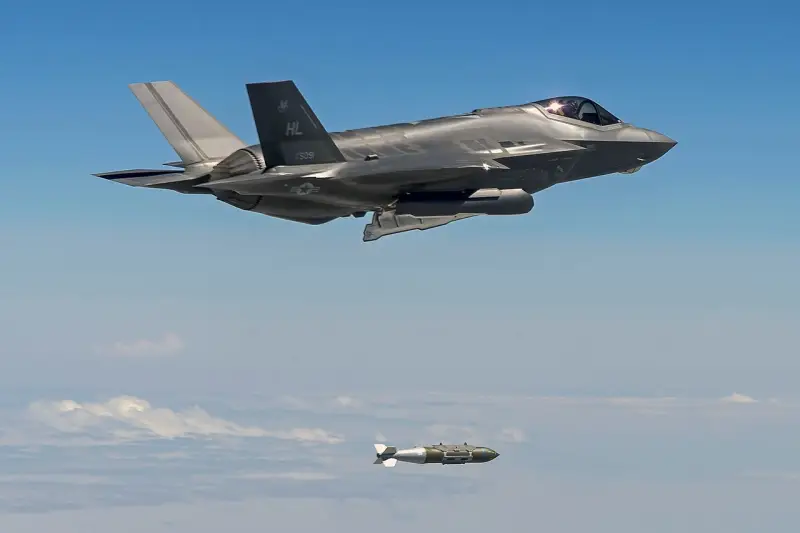
But there are no clear answers to this question. And what’s more, it’s not even expected. No one in the world really knows what this fifth-generation fighter should be like and against whom, most importantly, how it should fight.
They were never able to develop a consensus in the world, because no one can really say what this “fifth” should be. It is clear that the formal reference point is the American F-22, which was simply first on the list. And therefore it became a model, although some features of fifth-generation aircraft are not so new in terms of technology.
Based on the announced characteristics of the fifth generation, these are anti-radar coatings and non-metals in the design, which reduce the radar signature of the aircraft, supersonic flight without afterburner, weapon located in compartments inside the fuselage, and not on external slings. Everything else, like even the radar with AFAR, as they say, is not critical.
Let's figure it out a little.
Supercruise or supersonic flight without afterburner
In general, supercruise is a very old phenomenon. The first combat aircraft that was capable of flying at supersonic speed without afterburner was the British English Electric Lightning F, which made its first flight in August 1954.

And here it is worth remembering two heavyweights, our Tu-144 and the French Concorde, which easily flew in supercruise, and ours was also faster, and the Frenchman flew for a record long time.

So, non-afterburning supersonic flight is from the 50-60s of the last century.
Placing weapons inside the fuselage
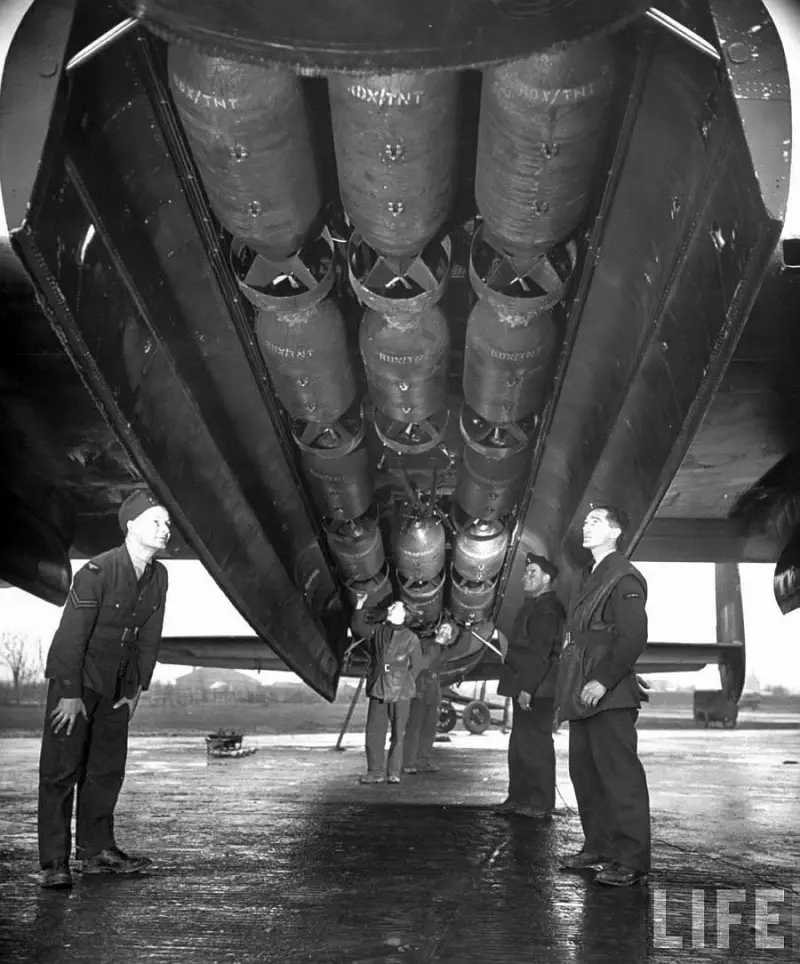
This is generally about a hundred years old. After the “Corner of the Sky” was blocked for absolutely idiotic reasons, it became difficult to find reliable information; we will limit ourselves to the fact that by the mid-30s of the last century, bombers carried bombs in the internal compartments, and not on the external sling.
Reduced radar signature

This could perhaps be called new. Radar-absorbing coatings, polymers and carbon fiber reinforced plastics in construction, in general, the replacement of metals with non-metals and the development of special forms that “hide” problem areas such as turbines - this can and should be called new. Plus some new items in avionics, but this is also normal, evolution still does not stand still, especially for combat vehicles.
But, in fact, a lot of “new” in fifth-generation aircraft is just well-developed old. And then everyone just went wild, trying to make their fifth-generation aircraft, and in exactly this style: we declare it the fifth generation, and then we’ll see.
What can be seen?
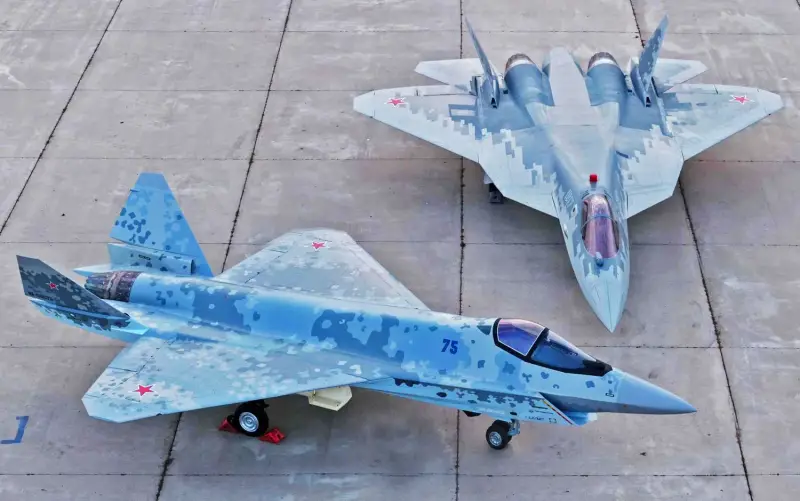
Well, if you take our Su-57, then it’s declared “five”, although it’s not quite one yet. Yes, its EPR is very decent, the plane is definitely not in the radar of the last century, and many modern ones can easily miss. And the missiles will be in the internal compartments, yes. But supercruise... Yes, everything will happen when the plane has the appropriate engines. And when this will happen, only the god of aviation and Rostec know. Although with the AL-41S, taking into account the airborne power, which not all Western aircraft have in this form, the Su-57 is quite handsome.

In the West, many people say exactly this - when THAT engine is installed, then the Su-57 will become a full-fledged fifth-generation fighter. In the meantime...
In the meantime, by the way, the Su-57 is the most effective fighter, even if not completely “top five”. Incredible, but true: a thousand F-35s cannot boast of anything in terms of combat use, with the exception of the Israeli F-35 Agir, which did an excellent job of smashing houses in Gaza into rubble.
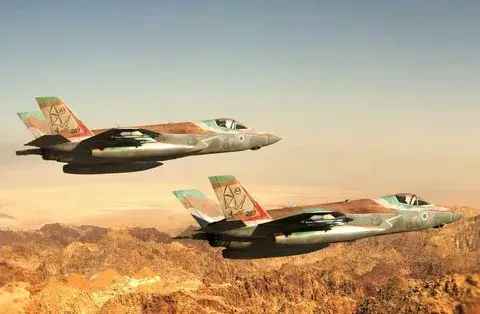
Of course, someone will now say that the destruction of houses is extermination, that is, work for the exterminator. But as for me, a fighter must first of all destroy his own kind, and not houses and other civilian objects. And with this, everything is sad for the 35th.

The F-22 broke the score at least in its third decade, chalking up its first aerial victory – an intelligence bubble launched by China. A big victory for such an aircraft, to say the least.
So even if there are two separate victories of the Su-57 in the skies of Ukraine, despite the fact that only 22 of these aircraft were manufactured and they are in fact still being tested, this is, as it were, more than all the merits of one and a half thousand American “fives”.
Although those who advocate for the Su-57 to finally go into production are definitely right. Currently, this is becoming increasingly important, because Kyiv is acquiring more and more modern air defense systems with all the resulting consequences. And an aircraft with EPR at the fifth-generation level would be more than useful to the army.
What else is on our agenda?
China

Neighbors and partners have a very interesting development, Chengdu J-20. The plane is truly a breakthrough for China, if only because this time the Chinese engineers, to their honor and praise, did not copy anyone. This is not easy for a country that 30 years ago did not even think about its own planes and flew what it could buy or tear apart.
The Chengdu J-20 is also not considered a full-fledged “five” in the world, like our Su-57, however, there is such a nuance - the Chinese have never stated that the J-20 is such.
I wasn’t too lazy, I tried to translate what was written on the website of the Chengdu Aircraft Industry Corporation, and so it says that the task was set to create “a stealth fighter capable of resisting any potential enemy in the air and performing the work of a multi-functional combat aircraft.”
No conventions.
In general, if you look at the EPR, it is stated at the level of 0,1 (for the Su-57 it is 0,3). It seems that everything is beautiful, but in reality, if you irradiate the J-20 radar in a side projection, then on the radar screen you will see a Christmas tree in all its glory. That is, the Chinese plane is quite suitable for a frontal attack, but in everything else it is doubtful.
In addition, the “Black Eagle” (that’s what the J-20 is called) has another weak point. And according to Chinese tradition, these are the same engines. The first samples of the J-20 flew on Russian AL-31FM2 engines, but all hopes for the maturity of the J-20 are connected with the new WS-15 engine, which should provide supercruise, super-maneuverability due to the UHT, and efficiency.
However, the WS-15 is confidently approaching its twentieth anniversary since its first launch, and the J-20, more precisely, is still there.

And one more aspect in terms of EPR for the J-20. These are his goals. The aircraft is also designed to work against enemy ships, which is not surprising, given the PRC coastline and the increasingly sympathetic attitude of the United States. However, the problem here is that the PLA simply does not have compact anti-ship missiles that can be hidden in weapons bays.
Accordingly, hello external suspension and goodbye stealth. So the J-20 will be inconspicuous on land, but at sea - alas. But there’s nothing to be done here; absolutely all anti-ship missiles are of such a size that, when hung on airplanes, they “fire” them for many tens of kilometers.
Finding such a plane and, naturally, shooting it down is not as difficult a task as the pilots of the plane would like it to be.
Turkey
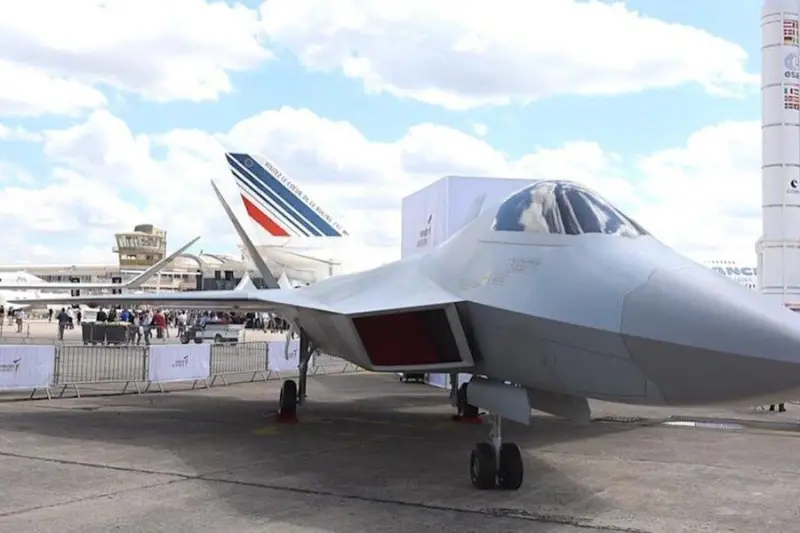
Turkish Fighter Experimental/Turkish experimental fighter is one of the most exciting projects in the world in general. After the Turks bought the Russian S-400 air defense systems, they were logically denied the sale of the F-35, which put the Turkish Air Force in an awkward position. Moreover, problems also arose with the modernization of existing F-16s.
The Turks decided to build an aircraft on their own, which in the future will replace the F-16, and will also meet all NATO standards (do not forget that Turkey is a member of the alliance), but the trouble is that the Turks had no experience of this kind.
It is clear that the whole world is helping here (Sweden, Italy, Pakistan), but there is one problem: Turkish engineers have never had the experience of creating their own aircraft engines from scratch, and the Americans have shown complete brilliance in the pan of their engines.
Negotiations with Pratt & Whitney and General Electric brought negative results, and it is difficult to say how the Turkish aviation industry will overcome this situation. They don’t give you their own, going to your opponents will obviously cost you more.
However, no one is in a hurry here, and they say that the EPR of the Kagan turned out to be at the level of our Su-27, that is, it is worthless.
So there is nowhere for anyone to rush here except the Turks, who really want their “five”, but there are more problems with it than it seemed at first glance.
South Korea

South Korean KF-21 - this is serious. The plane, which was first shown in April 2021, was a surprise to everyone, and for some it may turn out to be an unpleasant surprise. The Korean (relatively, half the world worked on it), which also claims to be a “five,” turned out to be cheaper than our Su-35, which played first fiddle in the “cheap and reliable” segment, which has been our aircraft for centuries.
The Su-35 is exported at a price of 80 to 90 million dollars, depending on the configuration, and the Koreans are making statements that their aircraft will be sold for 65 million dollars. And here the 20 million difference when buying a proven and reliable aircraft of the “4++” and “almost five” generation is a very powerful argument.
The KF-21 is actually very similar to the “five”. It can fly at supersonic speed without afterburner, the missiles are in the internal compartment, and stealth is also a factor. Complete stuffing in terms of avionics: radar with AFAR, infrared search and tracking system, a full set of NATO weapons. Yes, it’s worth saying here that South Korea is not a member of NATO, but its armed forces and equipment have a very high level of standardization according to NATO canons.
If the price really works out, we will witness some serious air battles on the ground. Peru, Poland, and the Philippines are already eyeing the Korean aircraft, and Indonesia has been in the project as a junior partner from the very beginning. And “five with a minus” can oh how to compete for the Asian market with our “four with a plus”.
It is clear and understandable that having poured so much money into the project, the Koreans will go to the foreign market, especially since their equipment is in demand. There, of course, they are waiting for them with batons, but still.
Europe

It’s not even really Europe here; there’s actually something interesting emerging here – a world team or the London-Rome-Tokyo Axis. Well, really, like a century ago, but instead of Berlin there is London.
In general, Great Britain, Italy and Japan, which suddenly joined them, decided that they would make the “five” together.
There is a strange thing here: the Japanese, having experimented to their heart's content with their Mitsubishi X-2 Shinshin, rashly announced that they would immediately proceed to the sixth generation. The project was called the FX, and this aircraft was supposed to replace the Mitsubishi F2 in the Air Force, which was already outdated. But the F2 was supposed to replace the F-22, with which it did not merge. American legislation did not allow it. We had to work on our own, and here, apparently, the Korean situation turned out - it’s very expensive within the framework of “Only for yourself,” and no one will let you sell it to Japan.
And now, apparently, the Japanese will bring all the developments from the “six” to the newly-minted Global Combat Air Program (GCAP) consortium to create a new generation fighter by 2035.
The project of the British fighter Tempest will be taken as a basis and everything that the participants have will be added. Everything is run by companies that need no introduction at all: BAE Systems, Leonardo UK, MBDA UK, Rolls-Royce, Mitsubishi Heavy Industries and others. The company is more than reputable, but most importantly, it is self-sufficient and in the future will easily have the opportunity to work on the aircraft theme. This is not Türkiye.
It turns out to be a very interesting assembly. Much more viable and promising than the Chinese or Korean programs, in my opinion. And with a twist, which is undoubtedly Japan.

Yes, joining the GCAP program definitely puts an end to Japanese ambitions, not to mention the sixth - fifth generation. But you can be confident in the results, because they know how to make airplanes together in Europe. And then the Japanese flew into Germany’s place from the latest Eurofighter Typhoon project, which promises them certain benefits.
Rolls-Royce will work on engines, BAE Systems in partnership with the British branches of Leonardo and MBDA on general planning and weapons platform, Italian Leonardo in partnership with Avio Aero, Elettronica and MBDA Italy will work on electronics and avionics, and what to do with such a giant as Mitsubishi Heavy Industries, I'm sure, will come up with it. In any case, joining the Japanese concern to the project will benefit everyone: Europeans will receive Japanese technology and production capacity, and the Japanese will realize their ambitions to create a new aircraft, and at a much lower cost.
In general, the “five” Tempest can be obtained with such a characteristic Asian eye shape.
Europe-2
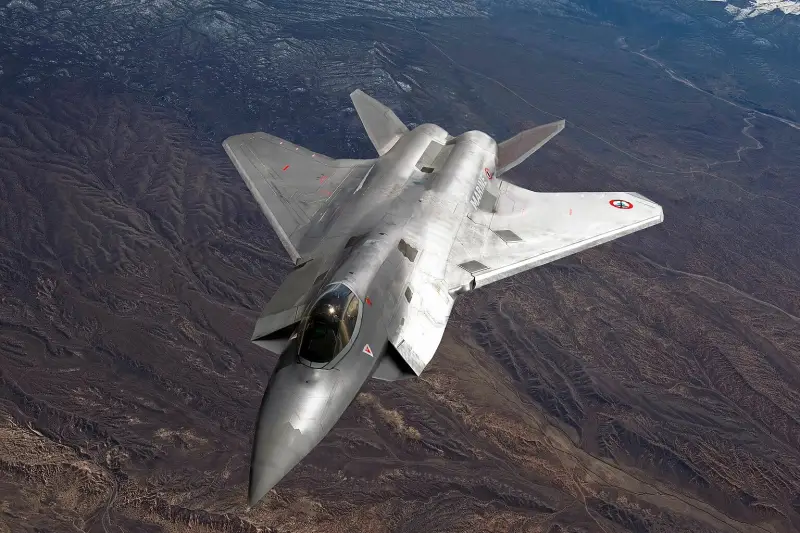
If anyone was surprised by the absence of such aviation luminaries as Germany and Sweden in the European program, then everything is fine: they have their own bar with blackjack and other pleasures.
More precisely, Germany, which, together with France and Spain (!), is working on the Future Combat Air System (FCAS) project to develop a new next-generation weapon system NGWS, which will include the Next Generation Fighter (NGF).
According to the plan, this aircraft will have to make its first flight by 2027, and by 2040 it will enter service and replace the French Rafale, German Typhoon and Spanish EF-18 Hornet.
The development and implementation of the project will be carried out by Dassault Aviation, Airbus and Indra Sistemas as general coordinators, and then others will follow. In 2023, Belgium joined the project as an observer.
And the NGF project is modestly called the sixth generation aircraft...
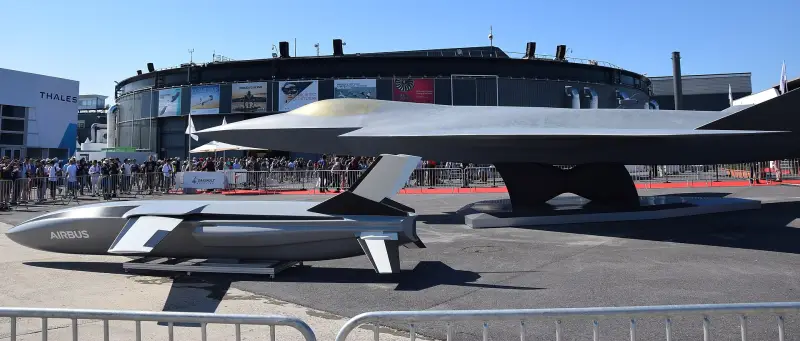
True, there is also something that will distinguish the sixth generation aircraft from the fifth: these are remote weapons platforms with weapons, drones-missile carriers that will fly ahead of the fighter, from which control and a swarm of auxiliary drones, possibly kamikaze drones or jammers, will be carried out.
The company of manufacturers is also more than successful: Dassault and Airbus as general contractors and partners MTU Aero Engines, Safran, MBDA and Thales. To be honest, it’s a very decent society.
It is not entirely clear, however, how the delivery of this entire gang of drones will be realized, either in the compartments of a fighter, or a cargo plane will follow it, if necessary, pouring out all this splendor from the ramp, but time, as they say, will tell.
Total for the fifth and other generations: what do we have today and what will happen tomorrow?
1. There are one and a half thousand US aircraft, F-22 and F-35. With a crazy cost of almost $400 million for the 22nd and $100 million for the 35th.
Combat use:
F-22s bombed Arab infantry in Syria and bombed drug laboratories in Afghanistan (Operation Bees vs. Honey). A Chinese reconnaissance balloon, which had previously flown across the entire territory of the United States, was shot down.
Israeli Air Force F-35s attacked targets in Syria, USMC F-35Bs bombed targets from Syria, Afghanistan and Iraq.
We emphasize in bold: American fifth-generation aircraft were NOT used against countries that had at least some kind of air defense and aviation. “Syria” and “Iraq” should not confuse anyone; at that time there was really nothing left of the air force and air defense in these countries.
2. The Chinese J-20 was produced in a series of 200 aircraft, but did not take part in hostilities.
3. The Russian Su-57 was manufactured in 22 production copies, took part in hostilities in Syria and Ukraine, according to the Russian Ministry of Defense, has two victories over Ukrainian aircraft.
As for everyone else, the combat use of these aircraft is a matter of a very distant future.
The conclusion suggests itself that the fifth generation aircraft, despite its advantages over aircraft of previous generations, is still absolutely unsuitable for real combat use. Global data suggests that the use of “fives” is justified only in cases where the enemy is unable to provide at least minimal resistance, such as Palestinian terrorists.
The loss of a fifth-generation aircraft is, on the one hand, a big financial loss and an even bigger reputational one. Any loss of such an aircraft will lead, first of all, to a decrease in interest in it as a combat unit, for which it is worth paying millions of dollars. Therefore, it is quite natural that all countries that have and will have such aircraft in the future will under no circumstances send them to places where the aircraft can be lost.
Therefore, the question “Who will the fifth generation fighter fight against” does not exactly remain open, but the answer to it is not very beautiful: against infantry with small arms. And nothing more than that.
It is not advisable to field “fives” even against “4+” fighters for the above reasons, because even the modernized third-generation MiG-21 fighter of the Indian Air Force could easily overwhelm the F-16 fighter of the Pakistan Air Force in the recent past. Despite the fact that it was a “four” fighter.
Well, the victory of a “four” fighter (such as the Su-35) costing half as much over the “five” will be great advertising and anti-advertising at the same time.
And if we recall here the level of development of modern air defense...
So we will continue to watch the development show for the “fives” for some time, at least until the “sixes” take to the skies, accompanied by retinues of squire drones. BUT, most likely, the proven “fours” will have to fight, all these Su-30, Su-35, F-16, F-15, F/A-18, “Mirage”, “Tornado” and others.
Information